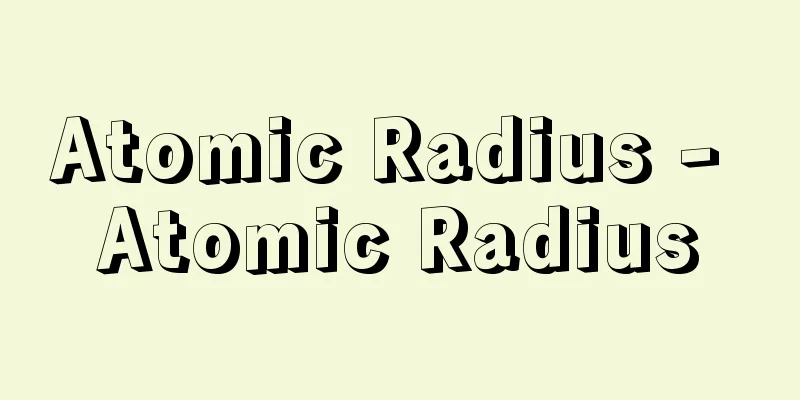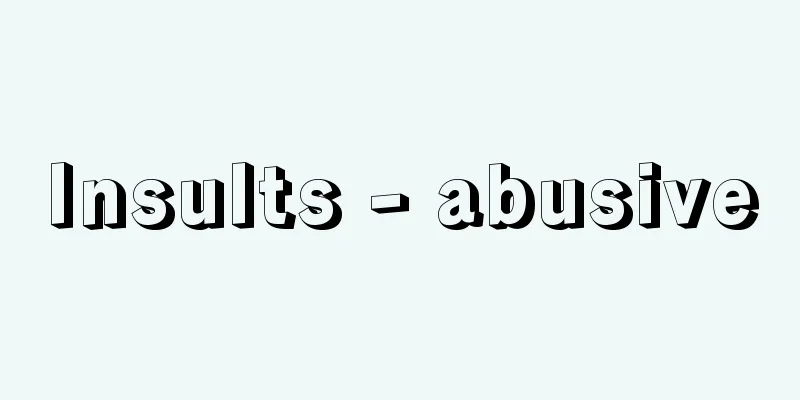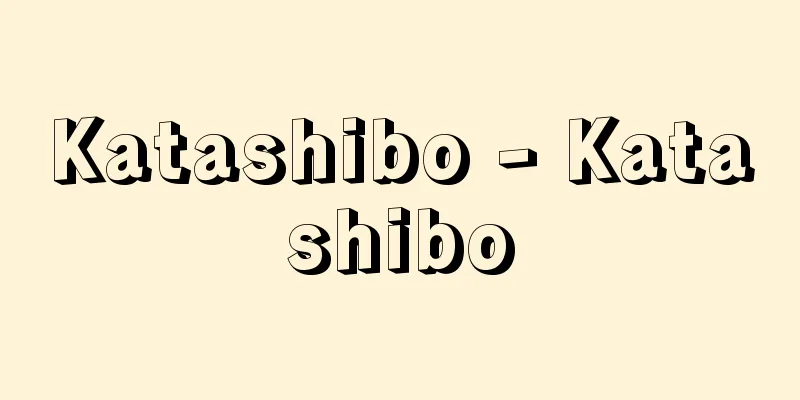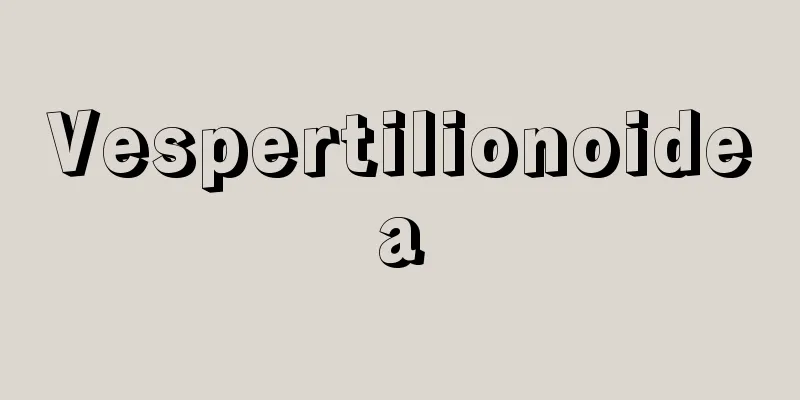Lesotho - Lesotho (English spelling)
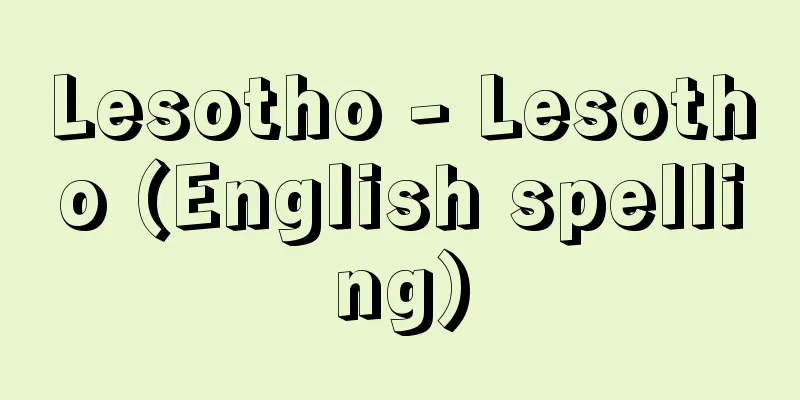
|
A landlocked kingdom in southern Africa. Surrounded by the Republic of South Africa. Formerly the British protectorate of Basutoland. Its official name is the Kingdom of Lesotho. Lesotho means the country of the Sotho (Basuto) people. Its area is approximately 30,355 square kilometers, with a population of 2.04 million (estimated as of 2000). Its capital is Maseru. [Akifumi Hayashi] NatureLocated on the Southern African Plateau, most of the country is between 1,820 and 3,350 metres above sea level. It is higher in the southeast and lower in the northwest. The western lowlands, which account for about a quarter of the country's land area, lie between the Caledon River and the Cave Sandstone Terraces. The terraces are Lesotho's agricultural production area, and the highlands to the east of them are the source of the Orange River and are on the west side of the Drakensberg Mountains. Annual precipitation is 635 mm, which is particularly high in the highlands. The rainy season is from October to April, with snowfall in winter. Average temperatures in the lowlands are about 21 °C in summer and 7 °C in winter. [Akifumi Hayashi] historyIn the 18th century, the Bantu-speaking Sotho people migrated from the north and settled in the Caledon River basin. In the early 19th century, influenced by the expansion of the Zulus (Mfekane), Chief Mosheshu fled to Thaba Boshe near Maseru, where he settled and eventually formed a kingdom. In the 1830s, the border was constantly violated by the Boers who had been moving north from the Cape, so the king asked Britain for protection, and in 1871 Basutoland was annexed to the Cape Colony, and in 1884 it officially became a British protectorate. Britain ruled through its high commissioner in South Africa, but with the exception of important decisions, administration was actually carried out by a political organization (Pitso) of Sotho kings and chiefs. In 1955, Pitso demanded greater autonomy from Britain, and in 1960, a National Council was formed, consisting of chiefs and elected representatives. Meanwhile, political party activity also became more active, with the Basutoland Congress Party (BCP) founded by Mokele in 1952 and the Basutoland National Party (BNP) founded by Jonathan in 1959. They demanded independence from Britain, and after a constitutional conference in London in 1964 and a general election in 1965, Lesotho gained independence as a constitutional monarchy on October 4, 1966, with BNP leader Jonathan as its first prime minister. However, soon after independence, a conflict arose between the king and the prime minister, and Jonathan exiled the king to the Netherlands. The king was later allowed to return to Lesotho on the condition that he would not interfere in politics. [Akifumi Hayashi] PoliticsThe 1966 Independence Constitution established a bicameral system with a 33-member upper house (22 appointed by the head of state and 11 by the king) and a 60-member lower house (all elected), but when it became clear that the opposition Basutoland Congress Party (BCP) had a majority in the 1970 general election, Prime Minister Jonathan immediately annulled the election results and suspended the constitution. In 1973, Jonathan opened a provisional national assembly to draft a new constitution, but the opposition parties opposed Jonathan's dictatorship and the conflict continued. The Jonathan administration supported the African National Congress (ANC), a black liberation organization in South Africa, and adopted a policy of confrontation with South Africa, such as approaching China and the Soviet Union. In January 1986, South Africa imposed an economic blockade on Lesotho on the pretext of restricting ANC guerrillas, and in the same month, General Lehanya, supported by South Africa, carried out a coup d'état, overthrew the Jonathan administration, gave executive and legislative powers to King Mosheshe II, and established a military council. In February 1989, the military government allowed the return of the exiled group, including the leader of the opposition BCP, Mokele. Meanwhile, Lehanya was at odds with King Moshessu II, and stripped him of his royal powers and exiled him to the UK. When the exiled king demanded a transition to civilian rule and the introduction of a multi-party system, the military council deposed Moshessu II in November 1990 and installed his son Letsie III in his place. However, the impact of democratization caused by the collapse of the Cold War structure also spread to Lesotho, and in February 1990, Lehanya appointed a task force to achieve a transition to civilian rule by 1992. In April 1991, a coup took place within the military, and Lehanya was ousted, with Colonel Ramaema becoming chairman of the Military Council in his place. Ramaema held a general election under a multi-party system in March 1993, a year later than planned, and the BCP won all 65 seats, forming the Mokele government. However, in August 1994, the Mokele government was overthrown by a coup led by King Letsie III. In response, neighboring countries South Africa, Zimbabwe, and Botswana tried to persuade Letsie III, and the Mokele government was restored in September. The government restored Moshe II to the throne in January 1995, but a year later, in January 1996, he died in a car accident and Letsie III was restored to the throne. [Akifumi Hayashi] Economy and IndustryThe country's per capita gross national income (GNI) is low at $580 (2000), making it one of the poorest countries in the world. The main industries are agriculture and livestock farming, which together account for about 70% of the country's gross domestic product (GDP). As the country is mountainous, arable land is limited to only 13% of the total land area, and self-sufficiency crops such as corn, wheat, sorghum, and beans are cultivated. Livestock farming is popular, and the number of livestock exceeds the population. Mining has been developed in recent years, and in 1976, a rich diamond deposit was discovered in the Letseng La Terei in the northeast, and the South African company De Beers is currently mining it. As it is located in the source area of the Orange River, water resources are abundant, and in 1987 construction began on the Highlands Water Project to transmit electricity to South Africa. The National Development Corporation was created to promote industrialization, but only small-scale industries such as clothing, recycled tires, textiles, and furniture manufacturing have developed. Since independence, Lesotho has opposed South Africa's racism and has been in political conflict with South Africa, but has been economically dependent on South Africa. In addition to importing most of its industrial products from South Africa, many Lesotho adult men migrate to South Africa every year to work in the gold mines there, and their remittances make up an important part of their household finances. Furthermore, Lesotho is a member of the Southern African Customs Union. Lesotho receives about 1.7% of the annual distribution from this tariff pool, but this small amount accounts for an important part of Lesotho's national finances. In order to break away from this economic dependence on South Africa, Lesotho signed the Lomé Agreement with the EC (European Community) in 1977, and then joined the Southern African Development Coordination Council (SADCC) in 1980, which became the Southern African Development Community (SADC) in 1992, and the Preferential Trade Area for Eastern and Southern Africa (PTA) in 1981, which became the Common Market for Eastern and Southern Africa (COMESA) in 1992. [Akifumi Hayashi] Society and CultureMost of the population is Bantu Sotho, and Christianity accounts for three-quarters of the population. The national university is the University of Lesotho, and primary school enrolment rates are high. [Akifumi Hayashi] [Supplementary Material] |"> Flag of Lesotho ©Shogakukan Illustration/Shogakukan Creative "> Lesotho location map Source: Shogakukan Encyclopedia Nipponica About Encyclopedia Nipponica Information | Legend |
|
南部アフリカの内陸にある王国。周囲を南アフリカ共和国に取り囲まれている。旧イギリス保護領バストランド。正式名称はレソト王国Kingdom of Lesotho。レソトとはソト人(バスト人)の国の意。面積約3万0355平方キロメートル、人口204万(2000推計)。首都はマセル。 [林 晃史] 自然南部アフリカ台地上にあり、国土の大半が海抜1820~3350メートルである。南東側が高く北西に低い。カレドン川とケーブ・サンドストーンテラスの間に全国土の約4分の1を占める西部低地がある。テラス部はレソト内の農業生産地域で、その東側の高地はオレンジ川の源流域でドラケンスベルク山脈の西側にあたる。年降水量は635ミリメートルで高地はとくに多い。雨期は10月~4月で、冬季には降雪もある。平均気温は低地で夏に約21℃、冬に7℃である。 [林 晃史] 歴史18世紀バントゥー語系のソト人が北方より移動しカレドン川流域に定着した。19世紀初めズールー人の拡大(ムフェカネ)の影響を受けて首長モシュシュはマセル付近のタバ・ボシュウに逃れ定着し、やがて王国を形成した。1830年代ケープから北上してきたブーア人に絶えず国境を侵害されたため、王はイギリスに保護を求め71年バストランドはケープ植民地に併合され、84年正式にイギリスの保護領となった。イギリスは南アフリカ駐在の高等弁務官を通じて統治したが、重要な決定を除いて実際はソト人の王と首長の政治組織(ピトソ)によって行政が行われた。 1955年ピトソはイギリスに対しいっそうの自治を要求し、60年、首長層および選出議員よりなる民族評議会がつくられた。一方、政党活動も盛んになり、1952年モケレによりバストランド会議党(BCP)、59年ジョナサンによりバストランド国民党(BNP)などがつくられた。彼らはイギリスからの独立を要求し、64年のロンドン制憲会議、65年の総選挙を経て、66年10月4日立憲君主国レソトとして独立、BNP党首ジョナサンが初代首相となった。しかし独立後まもなく国王と首相との間で対立が起こり、ジョナサンは国王をオランダへ追放した。のち国王は政治不介入を条件に帰国が許された。 [林 晃史] 政治1966年独立憲法は上下二院制をとり、上院33名(首長任命22名、国王任命11名)と下院60名(すべて選出)からなったが、70年総選挙で野党バストランド会議党(BCP)が多数を占めることが明らかになると、首相のジョナサンはただちに選挙結果を無効にし、憲法を停止した。73年ジョナサンは新憲法起草のための暫定国民議会を開いたが、野党はジョナサンの独裁化に反対し、抗争が続いていた。ジョナサン政権は南アフリカ共和国の黒人解放組織アフリカ民族会議(ANC)を支持し、中ソに接近するなど南アと対決する政策をとっていたが、南アは86年1月、ANCゲリラ規制を口実にレソトを経済封鎖、同月、南アに支援されたレハンヤ将軍がクーデターを決行、ジョナサン政権を打倒して、国王モシュシュ2世に行政、立法権を与え、軍事評議会を発足させた。1989年2月、軍事政権は野党BCPのモケレ党首ら亡命グループの帰国を許した。一方、レハンヤは国王モシュシュ2世と対立し、国王の権限を剥奪(はくだつ)してイギリスに追放した。さらに亡命した国王が民政移管、複数政党制の導入を要求すると、90年11月、軍事評議会はモシュシュ2世を廃位し、かわって息子をレツィエ3世として即位させた。 しかし冷戦構造崩壊による民主化の影響はレソトにも波及し、1990年2月レハンヤは92年をめどに民政移管を目ざすタスクフォース(任務部隊)を任命した。1991年4月、軍部内のクーデターが起こり、レハンヤは失脚し、かわってラマエマ大佐が軍評議会議長となった。ラマエマは予定より1年遅れて93年3月、複数政党制の下で総選挙を実施し、BCPが全65議席を獲得、モケレ政権が発足した。しかし、翌94年8月、レツィエ3世のクーデターによりモケレ政権は倒れた。これに対し周辺国の南アフリカ、ジンバブエ、ボツワナがレツィエ3世の説得に当り、9月にモケレ政権は復活した。同政権はモシュシュ2世を95年1月に復位させたが、その1年後の96年1月モシュシュ2世は自動車事故で死去し、レツィエ3世が復位した。 [林 晃史] 経済・産業1人当りの国民総所得(GNI)は580ドル(2000)と低く最貧国の一つである。主要産業は農業、牧畜であり、この両者で国内総生産(GDP)の約70%を占める。農業は、国土が山がちであるため可耕地は全国土のわずか13%に限られ、トウモロコシ、小麦、ソルガム(モロコシ)、豆類の自給用作物を栽培している。牧畜は盛んで、家畜の頭数は人口を上回る。鉱業は、近年開発が進み、1976年北東部のレッツェング・ラ・テライにダイヤモンドの富鉱が発見され、南アフリカ共和国系デビアース社が採掘にあたっている。オレンジ川源流域にあるため水資源は豊富で、87年、南アに送電するハイランド水利計画が着工された。工業化促進のため国家開発公社がつくられたが、衣料、再生タイヤ、織物、家具製造など小規模工業しか発達していない。 独立以来、レソトは、南アフリカ共和国の人種主義に反対し、政治的には対立しながらも、経済的には南アに依存していた。ほとんどの工業製品を南アから輸入しているほか、毎年多数のレソト成年男子が南ア金鉱山に出稼ぎに出ており、その送金が家計の重要な部分を占めている。さらにレソトは南部アフリカ関税同盟に加盟している。毎年この関税プールからの分配金のうち約1.7%をレソトが受け取っているが、このわずかの分配金がレソト国家財政の重要な部分を占めている。このような南アへの経済依存から脱却するため、1977年EC(ヨーロッパ共同体)とのロメ協定に調印し、さらに80年には南部アフリカ開発調整会議(SADCC、1992年南部アフリカ開発共同体SADCへ移行)、81年には東南部アフリカ特恵貿易地域(PTA、1992年東南部アフリカ共同市場COMESAへ移行)に加盟した。 [林 晃史] 社会・文化住民のほとんどがバントゥー系ソト人で、宗教はキリスト教が人口の4分の3を占める。国立はレソト大学があり、初等教育の就学率は高い。 [林 晃史] [補完資料] |"> レソトの国旗 ©Shogakukan 作図/小学館クリエイティブ"> レソト位置図 出典 小学館 日本大百科全書(ニッポニカ)日本大百科全書(ニッポニカ)について 情報 | 凡例 |
Recommend
Cicindela anchoralis (English spelling)
…[Maki Sachiko]. . . *Some of the terminology tha...
Tokyo Dream Record - Toukeimukaroku
A record of urban life in Kaifeng, the capital of...
Amatole
Amatol is an explosive made by mixing ammonium nit...
radon
Rn. Atomic number 86. Electron configuration [Xe]...
Raw silk - Suzushi
〘Noun〙 (formerly "susushi") ① Abbreviati...
Epiphronitis
...Interspecific hybridization is rare, but inter...
Classroom
...A special type of thought disorder is the infl...
Ashoka (English spelling)
The third king of the Maurya dynasty in India (rei...
Aleksandr Stepanovich Popov
Russian radio researcher. Born in a mining villag...
Donation Service - Donation Service
…These are bills used by the general public durin...
Cuba - Cuba (English spelling)
Cuba is a country that consists of Cuba, the larg...
Mukerji, DG (English spelling)
... In the 20th century, American children's ...
Colius striatus (English spelling) Coliusstriatus
… [Hiroyuki Morioka]. … *Some of the terminology ...
Proposal document - Kiansho
…This document is called a request for approval. ...
dispersion colloid
...Colloids in which hydrophilic polymers are dis...

